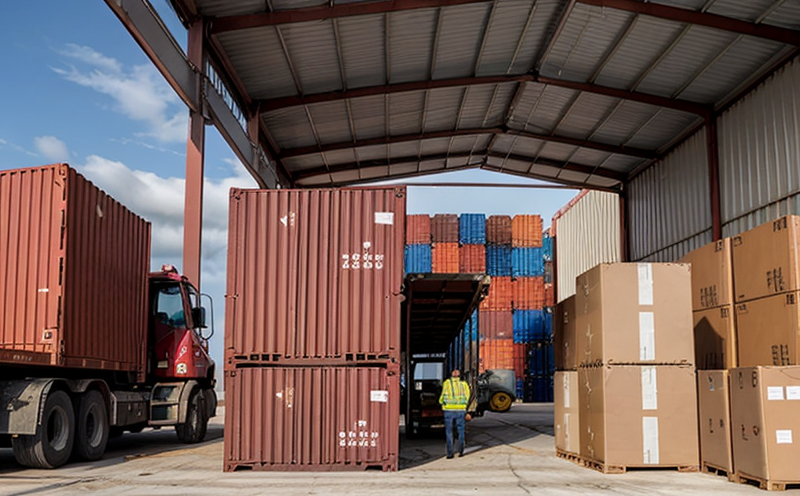Shipment inspection
In the realm of third-party surveillance and product quality inspection, shipment inspection stands as a critical component in ensuring that goods meet the highest standards before they reach their intended destination. This service is designed to verify the integrity and compliance of shipments with international standards such as ISO, ASTM, EN, IEC, and others.
The primary goal of shipment inspection is to provide comprehensive quality assurance for products during transit. It involves a detailed examination of goods to ensure they meet specified quality criteria, specifications, and regulatory requirements. This process includes the evaluation of packaging integrity, labeling accuracy, and the overall condition of the product upon arrival.
Shipment inspections are particularly important in sectors where product safety and compliance with international standards are paramount. For instance, industries such as pharmaceuticals, food and beverage, electronics, and automotive rely heavily on this service to ensure that every shipment is free from defects and meets regulatory requirements. In the context of third-party surveillance, shipment inspection helps maintain trust between suppliers, manufacturers, and customers by providing a robust quality control mechanism.
During a shipment inspection, various tests are conducted depending on the nature of the goods being inspected. These can include visual inspections to check for any visible damage or defects, physical measurements to ensure that dimensions conform to specifications, and chemical analysis to verify the purity or composition of materials. In some cases, destructive testing may be necessary to assess the durability or performance of a product under specific conditions.
The importance of shipment inspection extends beyond mere quality control; it also plays a crucial role in maintaining customer satisfaction and ensuring compliance with legal standards. By conducting thorough inspections, third-party surveillance agencies can help prevent costly errors that could arise from non-compliance. For example, pharmaceutical companies must ensure their products meet stringent regulatory requirements to avoid recalls or legal actions.
Shipment inspection services are typically provided by accredited laboratories and testing facilities that adhere to international standards and best practices. These labs employ experienced inspectors who are trained in various inspection techniques and have access to advanced instrumentation and equipment. The use of such resources ensures that inspections are accurate, reliable, and consistent across different shipments.
In summary, shipment inspection is a vital service in the third-party surveillance and product quality inspection sector. It provides assurance that goods meet specified standards, enhances customer satisfaction, and helps maintain compliance with international regulations. By leveraging advanced testing techniques and experienced inspectors, this service ensures that every shipment arrives at its destination in pristine condition and meets all required specifications.
Benefits
- Enhanced Product Integrity: Ensures that shipments arrive undamaged and meet quality standards, thereby protecting the reputation of suppliers and manufacturers.
- Compliance Assurance: Verifies adherence to international regulatory requirements, reducing the risk of legal issues and product recalls.
- Informed Decision-Making: Provides detailed reports that offer insights into shipment quality, helping stakeholders make informed decisions.
- Promotes Customer Trust: By ensuring high-quality products, this service helps build and maintain trust with customers and partners.
Why Choose This Test
There are several compelling reasons why third-party inspection agencies should choose shipment inspection as part of their quality control processes. Shipment inspections offer a comprehensive evaluation of goods, ensuring that they meet the highest standards before reaching their final destination.
- Comprehensive Assessment: Unlike spot-checks or limited examinations, shipment inspections provide an in-depth analysis of all aspects of the product and its packaging. This ensures that no critical issues are overlooked.
- Cost Efficiency: By identifying defects early on, shipment inspections can prevent costly rework or scrap later in the production process. This leads to significant savings for manufacturers and suppliers.
- Risk Management: Regular inspections help mitigate risks associated with non-compliance or substandard products. This reduces potential losses due to customer dissatisfaction or regulatory penalties.
- Enhanced Reputation: Consistently meeting quality standards not only improves the reputation of the inspected entities but also enhances their market position and customer loyalty.
Customer Impact and Satisfaction
The impact of shipment inspection on customers cannot be overstated. By ensuring that products meet specified quality criteria, this service directly contributes to higher customer satisfaction levels. When consumers receive goods that are free from defects and comply with all relevant standards, they are more likely to be pleased with their purchase.
Moreover, shipment inspection helps maintain long-term relationships between suppliers and customers by fostering trust and reliability. This is particularly important in industries where product quality plays a key role in customer perception. For example, in the pharmaceutical industry, ensuring that drugs meet stringent regulatory requirements can mean the difference between life-saving treatments and potentially harmful products.
By providing detailed reports on shipment quality, this service also empowers customers with valuable information that they can use to make informed decisions about their purchases. This transparency builds confidence and strengthens customer relationships.
In conclusion, shipment inspection is a crucial component of third-party surveillance and product quality inspection services. It ensures that goods meet the highest standards before reaching their final destination, thereby enhancing customer satisfaction and fostering long-term business success.





